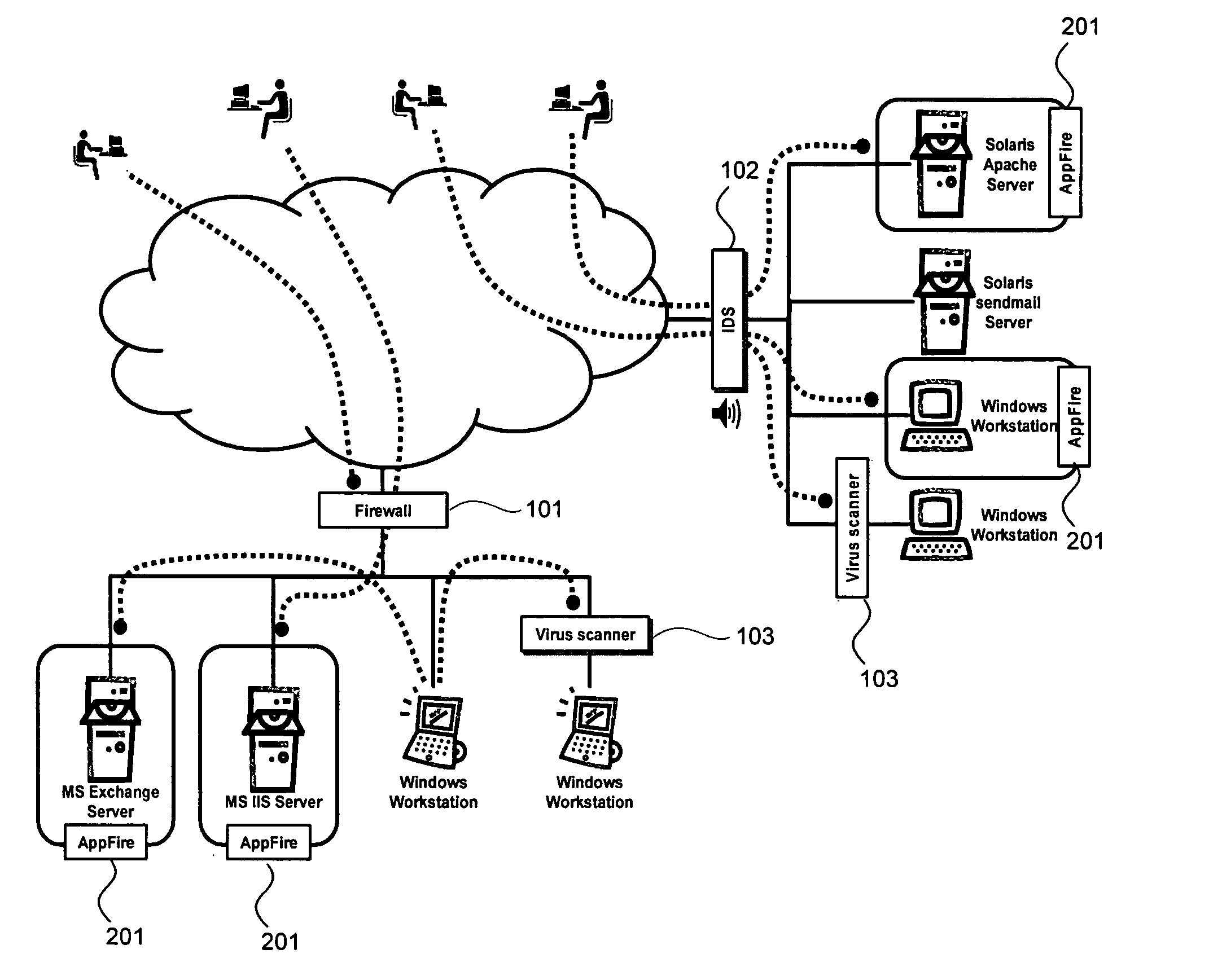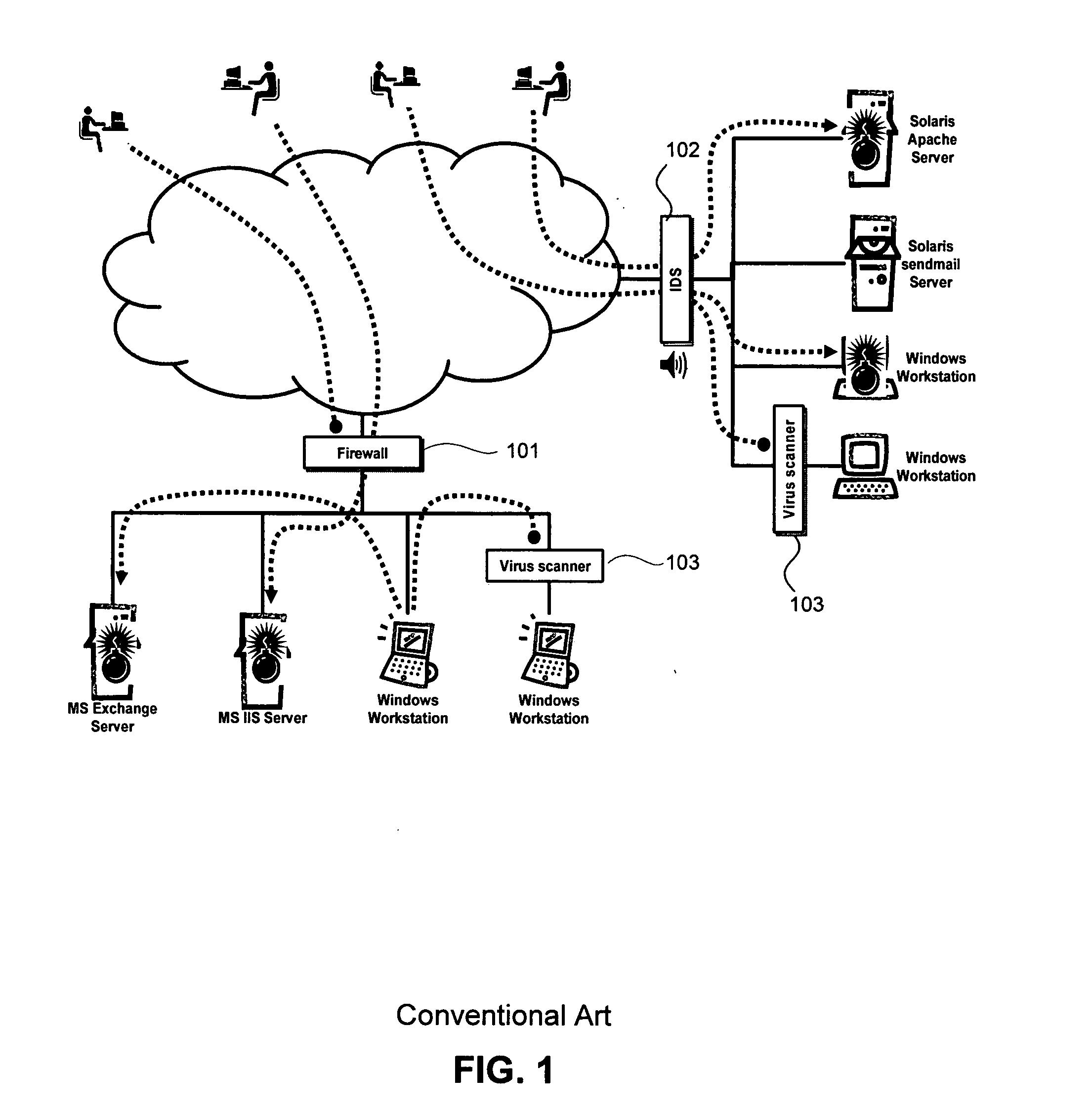Behavior-based host-based intrusion prevention system
a host-based intrusion prevention and behavior-based technology, applied in the field of host-based protection, can solve the problems of no longer adequate protection against new and unknown attacks or hostile insiders, and severe and frequent damage to critical computing resources
- Summary
- Abstract
- Description
- Claims
- Application Information
AI Technical Summary
Benefits of technology
Problems solved by technology
Method used
Image
Examples
Embodiment Construction
[0037] Reference will now be made in detail to the embodiments of the present invention, examples of which are illustrated in the accompanying drawings.
TABLE OF CONTENTS BEHAVIOR-BASED HOST-BASED InTRUSION PREVENTION SYSTEM cross reference to related applications1.0 Introduction2.0 Requirements for a successful behavioral-based firewall3.0 The APPFIRE ™ Solution4.0 Architectural Overview 4.1 APPFIRE ™ Agent 4.2 Management Infrastructure 4.3 APPFIRE ™ Manager 4.4 The APPFIRE ™ Enterprise Manager 4.5 The APPFIRE ™ Authoring Environment5.0 System Behavior Policies 5.1 Modular Policy Definition 5.2 Process Sets 5.3 Behavior Control Descriptions (BCDs) 5.4 The APPFIRE ™ Profiler6.0 J2EE Application Server7.0 System resources access control8.0 Example—CodeRed worm9.0 APPFIRE ™ Case Studies 9.1 Protecting against Malicious Employees 9.2 Protecting Custom Applications 9.3 Protecting Public IIS Servers 9.4 Managing Policy in Large Organizations 9.5 Reducing the Time-Critic...
PUM
 Login to View More
Login to View More Abstract
Description
Claims
Application Information
 Login to View More
Login to View More - R&D
- Intellectual Property
- Life Sciences
- Materials
- Tech Scout
- Unparalleled Data Quality
- Higher Quality Content
- 60% Fewer Hallucinations
Browse by: Latest US Patents, China's latest patents, Technical Efficacy Thesaurus, Application Domain, Technology Topic, Popular Technical Reports.
© 2025 PatSnap. All rights reserved.Legal|Privacy policy|Modern Slavery Act Transparency Statement|Sitemap|About US| Contact US: help@patsnap.com



